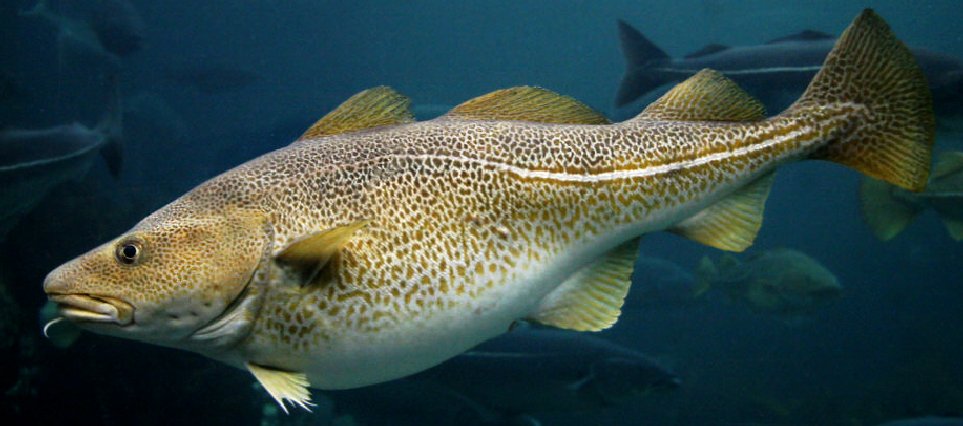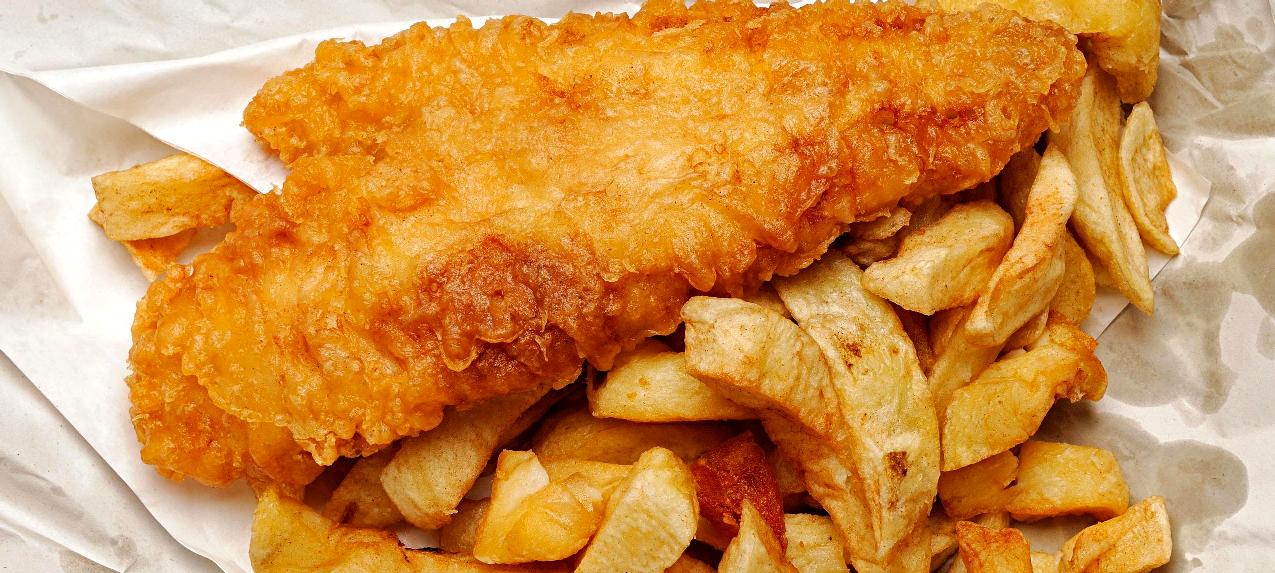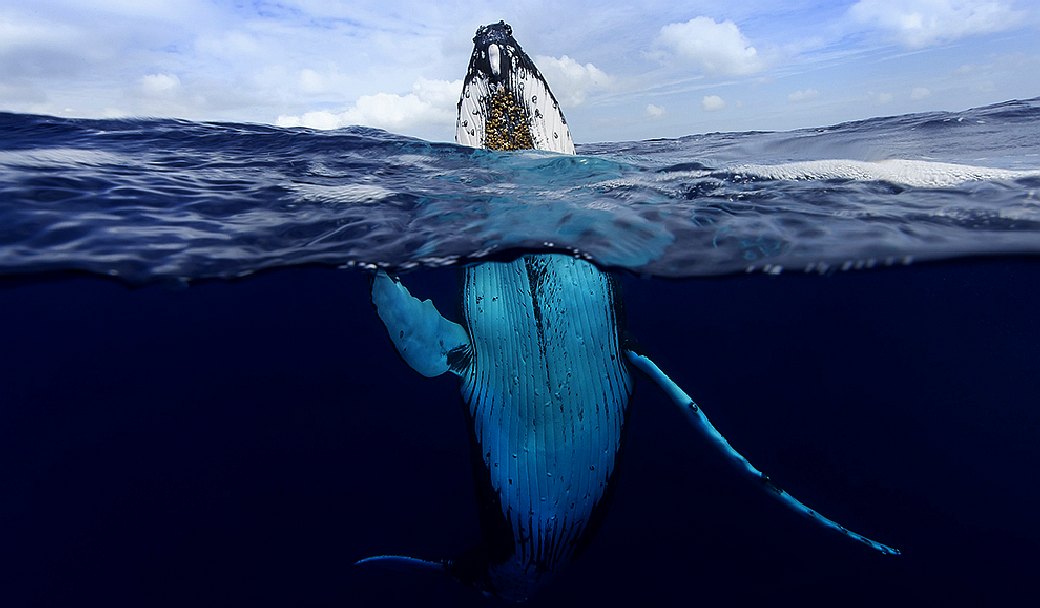|
COD
ABOUT -
HOME - WHALING
- A-Z INDEX
Anchovies
| Bass
| Bream
| Catfish
| Clams
| Cod
Coley
| Crabs
| Crayfish
| Eels
| Grouper
| Haddock
| Hake
| Halibut
| Herring
| Jellyfish
Krill
| Lobster
| Mackerel
| Marlin
| Monkfish
| Mullet
| Mussels
| Oysters
| Perch
| Piranha |
Plaice
| Pollock
| Prawns
| Rays
| Sablefish
| Salmon
Sardines
| Scallops
| Sharks
| Shrimp
| Skate
| Sole
| Sprat
| Squid
| Sturgeon
| Swordfish
| Trout
| Tuna
| Turbot
| Whiting

ATLANTIC
COD
- Is a staple of EU countries proximate to those fisheries.
In
an effort to feed a
growing population we should look at
alternatives lower down the food chain to increase the ratio
at which protein is harvested from the ocean, so bypassing the
conventional food chain where at each stage of consumption
there are significant losses in the conversion process. Jellyfish,
squid, krill
and filter feeders such a mussels could play a part in filling the widening gap between falling
fish stocks and higher demand to feed humans - so
relieving the pressure on tuna, salmon and other popular white
fish.
ABOUT
COD
The two most common species of cod are the Atlantic cod (Gadus morhua), which lives in the colder waters and deeper sea regions throughout the North Atlantic, and the
Pacific cod (Gadus macrocephalus), found in both eastern and western regions of the northern Pacific. Gadus morhua was named by Linnaeus in 1758. (However, G. morhua callarias, a low-salinity, nonmigratory race restricted to parts of the Baltic, was originally described as Gadus callarias by Linnaeus.)
Cod is popular as a food with a mild flavour and a dense, flaky, white flesh. Cod livers are processed to make cod liver oil, an important source of vitamin A, vitamin D, vitamin E, and omega-3 fatty acids (EPA and DHA). Young Atlantic cod or haddock prepared in strips for cooking is called scrod. In the
United
Kingdom, Atlantic cod is one of the most common ingredients in
fish and
chips, along with
haddock and plaice.
Atlantic cod (Gadus morhua) live in the colder waters and deeper sea regions throughout the North Atlantic. Pacific cod (Gadus macrocephalus) is found in both eastern and western regions of the Pacific.
Atlantic cod divide into several stocks, including the Arcto-Norwegian,
North
Sea, Faroe, Iceland, East Greenland, West Greenland, Newfoundland, and Labrador stocks. There seems to be little interchange between the stocks, although migrations to their individual breeding grounds may involve distances of 200 miles (320 km) or more.
Atlantic cod occupy varied habitat, favouring rough ground, especially inshore, and are demersal in depths between 20 and 200 feet (6.1 and 61.0 m), 80 metres (260 ft) on average, although not uncommonly to depths of 600 metres (2,000 ft). Off the Norwegian and New England coasts and on the Grand Banks of Newfoundland, cod congregate at certain seasons in water of 30–70 metres (98–230 ft) depth. Cod are gregarious and form schools, although shoaling tends to be a feature of the spawning season.
FISHERIES
The 2006 northwest Atlantic cod quota is 23,000 tons, representing half the available stocks, while the northeast Atlantic quota is 473,000 tons. Pacific cod is currently enjoying strong global demand. The 2006 total allowable catch (TAC) for the Gulf of Alaska and Aleutian Islands was 260,000 tons.
AQUACULTURE
Farming of Atlantic cod has received a significant amount of interest due to the overall trend of increasing cod prices alongside reduced wild catches. However, progress in creating large scale farming of cod has been slow, mainly due to bottlenecks in the larval production stage, where survival and growth are often unpredictable. It has been suggested that this bottleneck may be overcome by ensuring cod larvae are fed diets with similar nutritional content as the copepods they feed on in the wild Recent examples have shown that increasing dietary levels of minerals such as selenium, iodine and zinc may improve survival and/or biomarkers for health in
aquaculture reared cod larvae.

MANAGEMENT
Following the early 1990s collapse of Canadian stocks, the Canadian Department of Fisheries and Oceans (DFO) banned fishing for northern (that is, cod to the north and east of the island of Newfoundland, in Northwest Atlantic Fisheries Organization areas
JKL) cod in 1992, which caused great economic hardship in Newfoundland and Labrador. The collapse was blamed on cold water, or seals, and it had even been suggested the cod were really still there; only rarely was overfishing acknowledged, or management's role in that.
The DFO partly lifted its ban in 1997, although the International Council for the Exploration of the Sea noted the poor recovery of Canadian cod
stocks. In general, depleted populations of cod and other gadids appear to recover poorly when fishing pressure is reduced or
stopped.
In 1998, the Committee on the Status of Endangered Wildlife in Canada (COSEWIC) listed the Atlantic cod as "vulnerable", a category subsequently rebranded as "special concern", though not as an endangered species. Dr. Kim Bell, who drafted the report for COSEWIC, subsequently stated the original report in fact had advised endangered status, but political pressure by the DFO within COSEWIC had resulted in the committee voting for a decision of vulnerable.
In 2000, WWF placed cod on the endangered species list. The WWF issued a report stating the global cod catch had suffered a 70% drop over the last 30 years, and if this trend continued, the world’s cod stocks would disappear in 15 years. Åsmund Bjordal, director of the Norwegian Institute of Marine Research disputed the WWF's claim, noting the healthy Barents Sea cod population. Cod (known in Norway as skrei) is among Norway's most important fishery exports and the Barents Sea is Norway's most important cod fishery. In 2015, the Norwegian Seafood Council invited Crown Prince Haakon to take part in opening the year’s cod fishing season at Senja.
In 2003, under the new legislative framework of the Species At Risk Act [SARA], COSEWIC placed the Newfoundland and Labrador fisheries cod on the endangered species list and Fisheries Minister Robert Thibault announced an indefinite closure in the Gulf of St. Lawrence and off Newfoundland's northeast coast. In a 2004 report, the WWF agreed the Barents Sea cod fishery appeared to be healthy, but that the situation may not last due to illegal
fishing, industrial development, and high quotas. In 2005, the
WWF - Canada accused both foreign and Canadian fishing vessels of deliberate, large-scale violations of the restrictions on the Grand Banks, in the form of bycatch. WWF also claimed poor enforcement by NAFO, an intergovernmental organization with a mandate to provide scientific fishery advice and management in the northwestern Atlantic.
In 2006, the Norwegian Institute of Marine Research considered coastal cod (but not the North East Arctic cod) endangered, but has since reversed this assessment. In 2010, Greenpeace International added the Atlantic cod to its seafood red list. "The Greenpeace International seafood red list is a list of fish that are commonly sold in supermarkets around the world, and which have a very high risk of being sourced from unsustainable fisheries." According to Seafood Watch, cod is currently on the list of fish consumers should avoid. In the book The End of the Line, it is claimed cod is an example of how unsustainable fishing is destroying ocean ecosystems.
In a letter to Nature in 2011, a group of Canadian scientists reported that cod in the Scotian Shelf ecosystem off
Canada are showing signs of recovery.
LINKS
& REFERENCE
https://

MARINE
LIFE - This humpback whale is one example of a magnificent
animal that is at the mercy of human
activity. Humans are for the most part unaware of the harm their fast-lane
lifestyles are causing. We aim to change that by doing all we
can to promote ocean
literacy.
Anchovies
| Bass
| Bream
| Catfish
| Clams
| Cod
Coley
| Crabs
| Crayfish
| Eels
| Grouper
| Haddock
| Hake
| Halibut
| Herring
| Jellyfish
Krill
| Lobster
| Mackerel
| Marlin
| Monkfish
| Mullet
| Mussels
| Oysters
| Perch
| Plaice
| Pollock
| Prawns
| Rays
| Sablefish
| Salmon
Sardines
| Scallops
| Sharks
| Shrimp
| Skate
| Sole
| Sprat
| Squid
| Sturgeon
| Swordfish
| Trout
| Tuna
| Turbot
| Whiting
This
website is provided on a free basis as a public information
service. Copyright © Cleaner
Oceans Foundation Ltd (COFL) (Company No: 4674774)
2022. Solar
Studios, BN271RF, United Kingdom.
COFL
is a charity without share capital.
|


